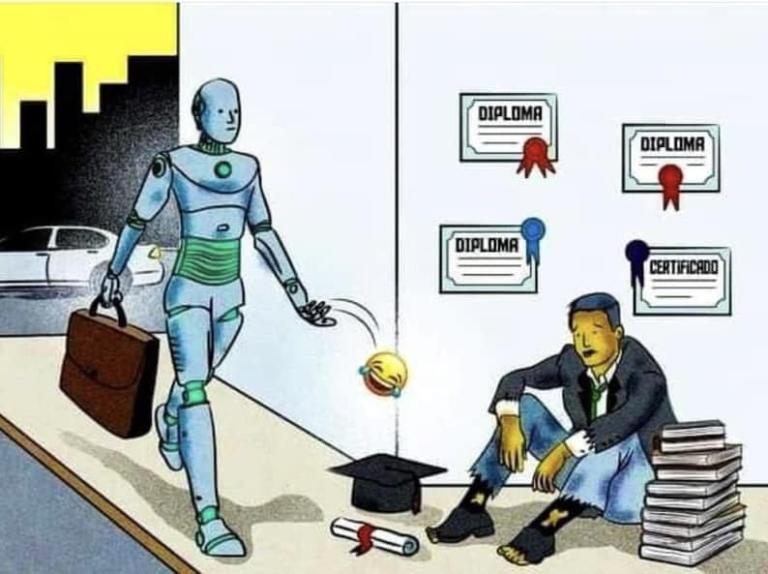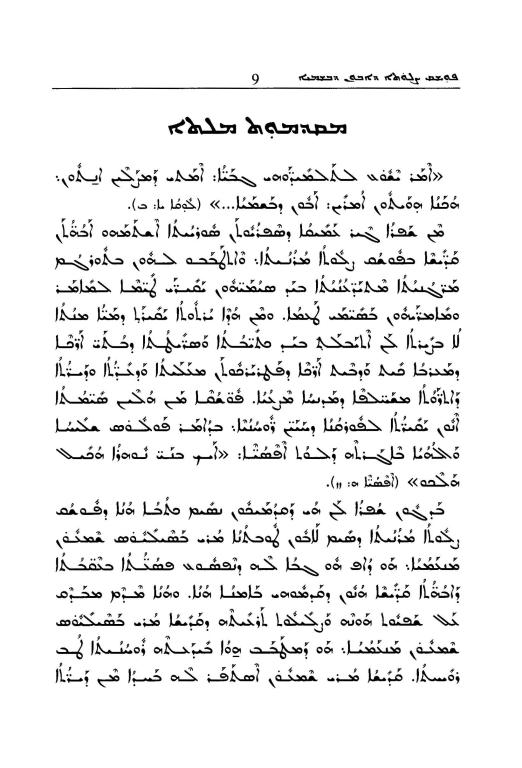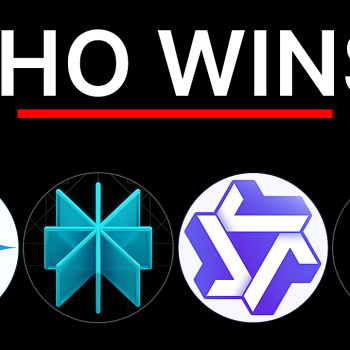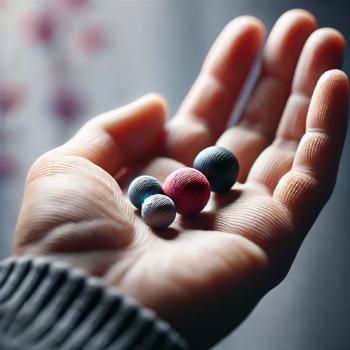A lot of people are expressing dismay about AI, mainly in relation to how they fear it will impact churches and educational institutions. I think that it is important to highlight and explore precisely those parallels. Let’s look at ChatGPT as author of modern sermons and translator of ancient ones.
ChatGPT and AI as Preacher?
A Facebook friend shared this cartoon:

The context was an expression of concern over how well ChatGPT can write a sermon. Here is how I responded:
This isn’t surprising and it is important to understand why it works and how it does what it does. It has as a basis for creation the text of all sermons that are in the public domain. Creating a typical sermon follows a tried and true pattern of discussing biblical text and applying it to people. It is straightforward for AI to learn to create new ones that mirror the form and the interpretation that one finds rehashed over and over in human-authored sermons.
What an LLM cannot do is offer new insight that relates directly to current events.
The question AI-generated sermons pose is the same one that the ready availability of great preaching online does. Why should anyone come listen to a mediocre or even a not bad preacher in their local church when they can go online and listen to a great one?
The question for churches is not very different from that faced by educational institutions. For a long time now it has not been necessary for people to sit in a church or classroom all facing the same direction listening to someone disseminate information to them. That used to be the most efficient if not indeed the only method for teaching and learning to occur. That hasn’t been the case for quite some time. If AI has us finally grappling with this and adapting to the present context, it is a good thing.
I will have an article coming out in the not too distant future about precisely this topic, as it happens. See also my recent blog post about the customized GPT that I made, ChatGPreachT.
ChatGPT and AI as Translator?
A colleague shared their experience of having ChatGPT offer a decent translation of a page from a lexicon. The page in question included text in Latin, Syriac, and other ancient languages. I decided to experiment to see what it is capable of. I started gently with a small snippet of text in Syriac available online. My words are the lines in bold (there is some bold in ChatGPT’s responses but I think the distinction will be clear).
Can you help me understand what this means? ܝܘܚܢܢ ܕܝܢ ܐܬܚܙܝ ܡܢ ܥܩܪܘܬܐ ܘܡܢ ܣܝܒܘܬܐ ܐܬܝܠܕWow, thank you. Can you do the same with this? ܥܠ ܐ݇ܪܙܐ ܕܩܘܪܒܢܐ ܩܕܝܫܐ: ܡܢ ܟܬܒܼܐ ܕܡܪܓܢܝܬܐ ܕܡܪܝ ܥܒܼܕܝܫܘܥ ܕܨܘܒܼܐ (ܬܚܝܬ ܫܘܟ݂ܠܠܐ) ܛܟܼܣܐ ܕܐܪܙܐ: ܩܘܕܫܐ ܕܡܪܝ ܐܕܝ ܘܡܪܝ ܡܐܪܝ ܫܠܝܼܚ̈ܐ ܛܘܒܼܢ̈ܐ ܩܘܕܫܐ ܕܡܪܝ ܬܐܕܘܪܘܣ ܩܘܕܫܐ ܕܡܪܝ ܢܣܛܘܪܝܣ ܘܡܩܕܫܝܢ ܒܗ ܚܡܫ ܙܒ݂ܢ̈ܬܐ ܒܫܢ̄ܬܐ (ܥܐܕܐ ܕܕܢܚܐ، ܕܘܟܼܪܢܐ ܕܡܪܝ ܝܘܚܢܢ ܡܥܡܕܢܐ، ܕܘܟܼܪܢܐ ܕܡܠܦܢ̈ܐ ܝܘܢܝ̈ܐ، ܐܪܒܥܒܫܒܐ ܕܒܥܘܬܐ ܕܢܝܢܘܝ̈ܐ، ܥܐܕܐ ܕܦܨܚܐ) ܡܘܕܥܢܘܬܐ ܥܠ ܒܢܝܢܐ ܕܥܘܡܪܐ ܘܡܢܘܬ̈ܗ ܘܣܘܟܠܝ̈ܗܝ (ܬܚܝܬ ܫܘܟ݂ܠܠܐ) ܦܘܫܩ ܐ݇ܪܙܐ: ܡܐܡܪܐ ܕܡܪܝ ܢܪܣܝ ܟܢܪܐ ܕܪܘܚܐ ܡܐܡܪܐ ܕܡܪܝ ܝܘܚܢܢ ܒܪ ܙܘܥܒܝ (ܬܚܝܬ ܫܘܟ݂ܠܠܐ)
I didn’t have it continue generating text since it was clearly not managing to read the jpg. If you were someone who needed a translation and had no capacity with the language in question, you might assume that ChatGPT was doing what you asked correctly, even if the output was unintelligible. You may not know Syriac, but did you at least look to see if what it transcribed in Syriac letters resembles what appears in the image? There are kinds of fact checking that anyone can do. It is more important than ever for everyone to get in the habit of using them.
Conclusion
To some readers, translating from a dialect of Aramaic and crafting sermons may seem worlds apart. (One also likely interests you far more than the other). Both involve AI LLMs like ChatGPT doing things with the patterns in human text that already exists. In the case of making a sermon, it imitates the form and contents of human sermons. In the case of translating a text, it follows patterns of correspondence between human languages.
What there can never be is an AI that is guaranteed to translate accurately or to provide reliable information. Those are not processes that can be automated. An AI can do that in a way that is probable if people train it to do so. That’s nothing new. Library search databases were already able to maximize your odds of finding reliable sources. They do this by limiting themselves to certain categories of publications and things that resemble them. It has always been possible to fool Google Scholar by having something look like a journal, and articles with footnotes.
I’m excited by the possibility that humans can use AI to translate texts into English that never have been before. It can do this in a way that will be largely correct, if the text is digitized accurately and the AI is trained on the relevant languages. It may at least be able to get enough right that the importance of an untranslated text can be easily recognized by a person skimming its output. That would still be a lot easier for a scholar than taking a look at a manuscript written in another language in the handwriting of a past era.
I’m even more excited that more of my colleagues in churches, schools, and universities may finally be ready to ask what it is that makes it worthwhile for us to gather together in one place. Meeting with other people to mutually educate and uplift, as we seek to foster each other’s mental, emotional, and spiritual development, may at long last take center stage.














